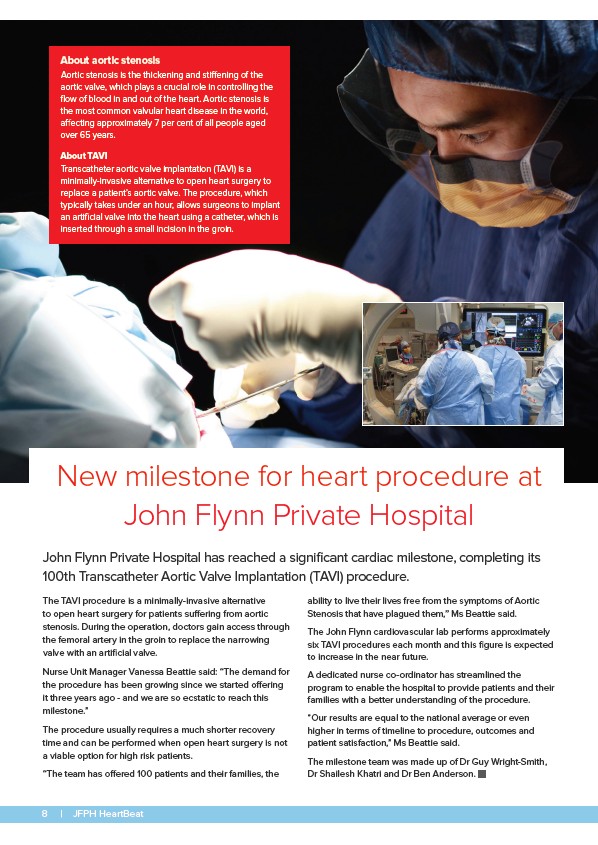
New milestone for heart procedure at
John Flynn Private Hospital
John Flynn Private Hospital has reached a significant cardiac milestone, completing its
100th Transcatheter Aortic Valve Implantation (TAVI) procedure.
The TAVI procedure is a minimally-invasive alternative
to open heart surgery for patients suffering from aortic
stenosis. During the operation, doctors gain access through
the femoral artery in the groin to replace the narrowing
valve with an artificial valve.
Nurse Unit Manager Vanessa Beattie said: “The demand for
the procedure has been growing since we started offering
it three years ago - and we are so ecstatic to reach this
milestone.”
The procedure usually requires a much shorter recovery
time and can be performed when open heart surgery is not
a viable option for high risk patients.
“The team has offered 100 patients and their families, the
8 | JFPH HeartBeat
ability to live their lives free from the symptoms of Aortic
Stenosis that have plagued them,” Ms Beattie said.
The John Flynn cardiovascular lab performs approximately
six TAVI procedures each month and this figure is expected
to increase in the near future.
A dedicated nurse co-ordinator has streamlined the
program to enable the hospital to provide patients and their
families with a better understanding of the procedure.
“Our results are equal to the national average or even
higher in terms of timeline to procedure, outcomes and
patient satisfaction,” Ms Beattie said.
The milestone team was made up of Dr Guy Wright-Smith,
Dr Shailesh Khatri and Dr Ben Anderson.
About aortic stenosis
Aortic stenosis is the thickening and stiffening of the
aortic valve, which plays a crucial role in controlling the
flow of blood in and out of the heart. Aortic stenosis is
the most common valvular heart disease in the world,
affecting approximately 7 per cent of all people aged
over 65 years.
About TAVI
Transcatheter aortic valve implantation (TAVI) is a
minimally-invasive alternative to open heart surgery to
replace a patient’s aortic valve. The procedure, which
typically takes under an hour, allows surgeons to implant
an artificial valve into the heart using a catheter, which is
inserted through a small incision in the groin.